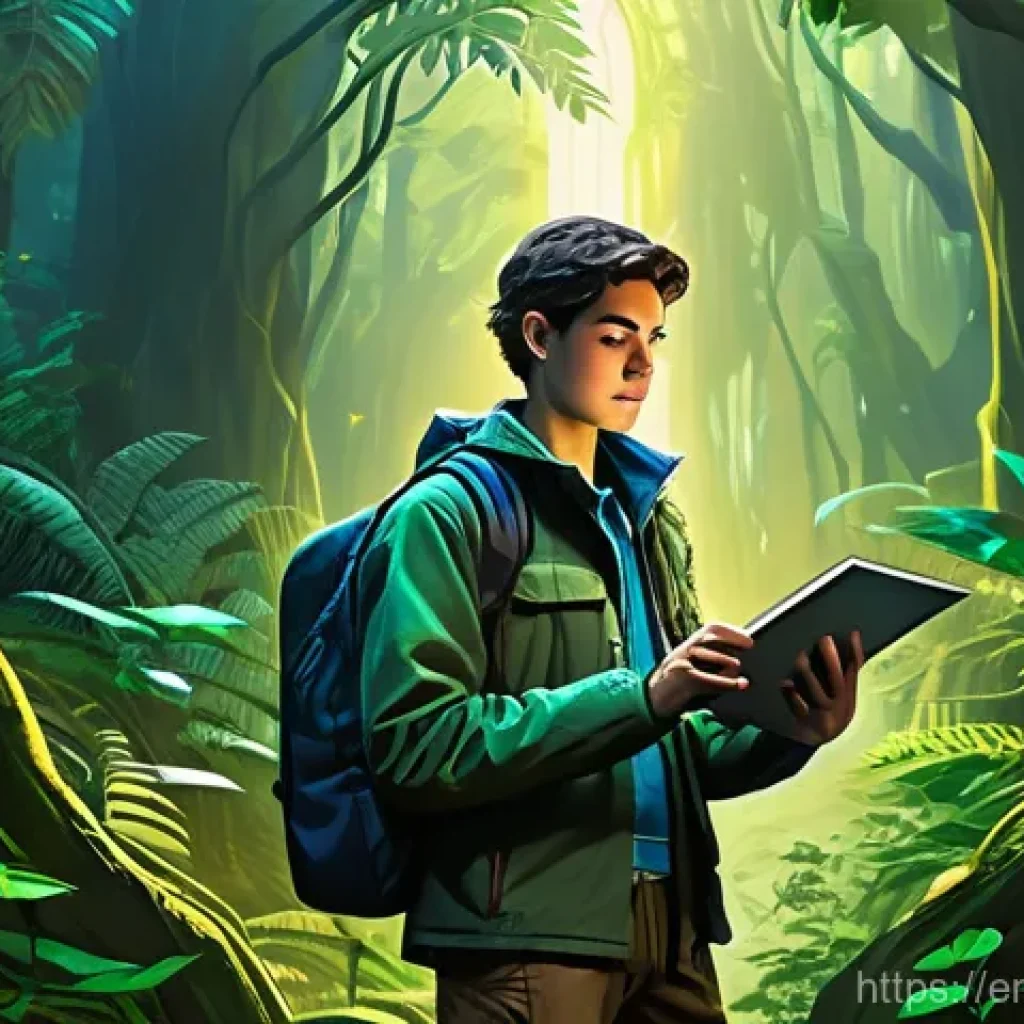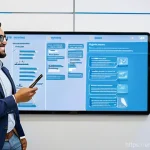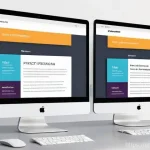Hey there, fellow learners and growth enthusiasts! I’ve been on quite a journey lately, diving deep into the world of self-directed learning, not just for myself, but as a coach guiding others.
It’s truly fascinating to see how empowering it is when you take the reins of your own education, especially with all the incredible online resources and AI-powered learning tools available today.
I’ve personally navigated the highs and lows, gaining invaluable insights into staying motivated and effective in a world that demands continuous skill development.
If you’re looking to supercharge your own learning path or inspire others, this diary is packed with real-world strategies I’ve discovered. Let’s get into the specifics!
Cultivating Your Inner Learning Dynamo

Shifting Your Perspective: From Student to Explorer
You know, for the longest time, I felt like learning was something that *happened to me*, rather than something I actively pursued. It was all about deadlines, grades, and external validation.
But honestly, my entire perspective shifted when I started seeing myself not as a passive student, but as an intrepid explorer in the vast jungle of knowledge.
It was genuinely transformative. I remember feeling a bit overwhelmed at first, staring at the sheer volume of information out there, wondering where to even begin.
But then, it clicked: this wasn’t about memorizing facts; it was about satisfying my own deep-seated curiosity. This mindset change is key, my friends.
It’s about taking full ownership, realizing that your education isn’t a chore, but an adventure you design. When you embrace this, the energy just flows differently, doesn’t it?
You stop dreading the textbook and start hunting for insights like a treasure map. I’ve personally navigated this transition, and the empowerment it brings is truly incredible.
It’s like finding a new pair of glasses that lets you see the world in vibrant, exciting colors. This proactive stance cultivates an intrinsic motivation that no external reward can ever truly match, keeping you engaged and eager for more.
It’s a journey I genuinely wish everyone could experience.
Setting Your North Star: Goals That Actually Stick
Let’s be real, we’ve all been there: setting ambitious learning goals on a Monday only to find them gathering dust by Wednesday. What I’ve learned, often through a bit of trial and error, is that goals need to be more than just “SMART”; they need to have heart.
They need to connect to something deeper within you, something that truly resonates with your values and aspirations. For instance, instead of just saying, “I want to learn coding,” try, “I want to master Python to build an app that solves X problem, because I care deeply about Y.” That shift, from a vague aspiration to a deeply personal mission, makes all the difference.
I remember wanting to learn a new language, and it felt like such a slog until I connected it to my dream of traveling through Europe and truly immersing myself in the culture.
Suddenly, every difficult grammar lesson wasn’t just a hurdle; it was a step closer to a vivid, personal experience. It made the late-night studies and awkward conversations with native speakers feel like triumphs, not tribulations.
So, when you’re mapping out your learning path, really dig deep and ask yourself *why* this matters to you. That emotional connection is your North Star, guiding you through the inevitable storms and keeping you anchored when the going gets tough.
It’s what transforms a fleeting interest into a persistent pursuit.
Navigating the Wild West of Online Resources
Finding Your Gold Mine: Curating Quality Content
Oh, the internet – a boundless ocean of knowledge, yet sometimes it feels more like a tsunami of information, doesn’t it? When I first plunged into self-directed learning, I honestly felt swamped.
There was so much out there, and separating the genuinely valuable insights from the digital noise was a real challenge. What I’ve found indispensable is developing a keen eye for curation.
It’s not about consuming everything; it’s about selectively sifting through it all to find your personal gold mines. I started by identifying a few trusted thought leaders and institutions in my areas of interest.
Their recommendations often led me to other reputable sources. Look for content that cites its own sources, presents balanced perspectives, and offers practical, actionable advice rather than just theoretical musings.
My personal rule of thumb is, if I can’t immediately see how to apply the information, or if it feels like just another rehash, I move on. It takes practice, but once you start building your own trusted learning library – a collection of websites, podcasts, books, and courses you genuinely value – the overwhelm significantly diminishes.
It’s like having your own expert librarian, always ready to point you to the good stuff. This strategic approach to content discovery has saved me countless hours and significantly deepened my understanding.
Leveraging Digital Tools: Beyond the Basics
In today’s digital age, our learning journey is powered by an incredible array of tools, but it’s easy to just scratch the surface. I mean, we all use search engines, right?
But what about leveraging these tools to truly enhance, not just supplement, your learning process? I’m talking about things like personalized learning platforms that adapt to your pace, advanced note-taking apps that link ideas contextually, or even spaced repetition software that genuinely helps information stick.
I’ve experimented with so many over the years, and the key, I’ve discovered, is finding tools that align with your unique learning style and the specific content you’re tackling.
For example, I used to just jot down notes haphazardly, but once I started using a tool like Notion to organize my thoughts, link related concepts, and even track my progress on different topics, my retention and understanding skyrocketed.
It wasn’t just a place to store information; it became an active workspace for my brain. Don’t be afraid to try different things! You might find that a podcast player with variable speed control changes how you consume audio content, or that a mind-mapping tool helps you visualize complex systems more clearly.
The right tools don’t just make learning easier; they make it more efficient, more engaging, and ultimately, more effective.
| Learning Tool Category | My Top Pick & Why | Key Benefit for Self-Directed Learners |
|---|---|---|
| Course Platforms | Coursera / edX | Structured learning paths, university-level content, peer interaction. |
| Productivity & Note-Taking | Notion | Centralized workspace for notes, projects, habit tracking, and resource organization. |
| Knowledge Aggregation | Pocket / Instapaper | Save articles and videos to consume later, offline access for focused learning. |
| Skill Practice | Codecademy / LeetCode | Hands-on application, immediate feedback, building practical skills. |
| Community & Mentorship | LinkedIn Learning Groups | Connect with experts, ask questions, find accountability partners, real-world insights. |
The Motivation Marathon: Keeping Your Spark Alive
Battling the Burnout Beast: Strategies for Sustained Effort
Let’s face it, self-directed learning is a marathon, not a sprint, and sometimes that burnout beast rears its ugly head. I’ve definitely had my moments where the motivation drained away, leaving me staring blankly at my screen, feeling like I was making no progress.
It’s completely normal! The trick, I’ve learned, isn’t to pretend it won’t happen, but to have strategies in place for when it does. Taking regular, intentional breaks is paramount.
I mean, truly stepping away – going for a walk, grabbing a coffee, or even just doing a quick five-minute meditation. These aren’t interruptions; they’re essential recharges for your brain.
Celebrating small wins is another huge one. Finishing a tough module? Acknowledge it!
Understanding a difficult concept? Give yourself a pat on the back! These little moments of triumph build momentum and remind you that you *are* making progress, even when it feels slow.
I remember once hitting a wall with a complex data analysis project, and I felt utterly defeated. Instead of pushing through, I took a day off, completely disconnected.
When I came back, refreshed, I tackled it with a new perspective and finally had that “aha!” moment. It taught me that sometimes, stepping back is the fastest way forward.
Your mental energy is a finite resource, so treat it with the respect it deserves.
Building Your Accountability Crew: Why You Can’t Do It Alone
One of the biggest misconceptions about self-directed learning is that it has to be a solitary endeavor. While the “self” part is crucial, the “alone” part can often be a recipe for burnout and frustration.
Trust me, I’ve tried the lone wolf approach, and while I learned a lot, I also hit walls that felt insurmountable. That’s when I realized the immense power of an accountability crew.
This could be a study partner, a mentor, an online community, or even the people you’re coaching. Knowing that someone else is expecting you to show up, or that you’re going to share your progress (or struggles!) with them, creates a powerful external motivator.
I’ve been part of several learning groups over the years, and the camaraderie, the shared challenges, and the collective celebration of successes have been truly invaluable.
There’s a certain magic in bouncing ideas off someone else, hearing different perspectives, and realizing you’re not the only one grappling with a tricky concept.
Plus, when you’re coaching others, you inherently become more accountable to your own learning and growth, because how can you guide effectively if you’re not also walking the talk?
It’s a beautiful feedback loop that keeps everyone motivated and moving forward. Don’t underestimate the human connection in your learning journey; it’s a game-changer.
Unlocking Potential: AI as Your Learning Sidekick
Beyond the Hype: Practical AI Applications for Learners
Alright, let’s talk about AI. There’s a lot of buzz, a lot of futuristic talk, but what does it really mean for us, the self-directed learners? For me, AI has moved way beyond just hype; it’s become an incredibly practical sidekick in my learning adventures.
Think about it: instant explanations for complex topics, personalized study schedules tailored to your weaknesses, even AI tutors that can simulate conversations in a new language.
It’s not just about getting quick answers; it’s about unlocking deeper understanding and making learning more efficient. I’ve personally used AI to break down dense academic papers into digestible summaries, helping me grasp the core arguments much faster.
I’ve also experimented with AI tools that generate practice questions based on material I’ve just read, reinforcing my understanding in a way that traditional methods often couldn’t.
It’s like having a hyper-intelligent research assistant and a patient tutor rolled into one, always available and tirelessly working with you. The key is to see AI not as a replacement for your own critical thinking, but as an amplifier for your efforts, allowing you to focus on the higher-level analysis and application, rather than getting bogged down in basic comprehension.
Ethical AI Use: Learning Smarter, Not Cheating
With great power comes great responsibility, right? That certainly applies to using AI in our learning journey. There’s a crucial distinction between leveraging AI to learn smarter and using it to cut corners or, worse, to cheat.
My philosophy is pretty straightforward: AI should enhance your cognitive abilities, not replace them. For instance, if I’m struggling with a concept, I’ll ask an AI to explain it in simpler terms or provide different analogies, but I’ll still do the work of processing that information and synthesizing it myself.
I’d never ask it to write an entire essay for me, because that completely bypasses the entire point of learning to articulate my own thoughts. It’s about using AI to clarify, to explore different perspectives, to generate ideas, and to get feedback on your work, not to outsource the core intellectual effort.
I’ve often used AI to help me brainstorm ideas for a blog post or outline a new course module, but the actual writing and the unique insights always come from my own experience and expertise.
When used thoughtfully and ethically, AI can be an incredible partner in your self-directed learning, helping you to truly internalize knowledge and develop genuine skills, rather than just acquiring superficial answers.
From Knowledge to Wisdom: Applying What You Learn
The Project Power-Up: Learning by Doing
We can read all the books, watch all the tutorials, and listen to all the podcasts, but until we actually *do* something with that knowledge, it often remains theoretical, floating around in our heads.
This is where the “project power-up” comes in, and honestly, it’s where true learning begins for me. Taking on a project, big or small, forces you to apply concepts, troubleshoot problems, and see how different pieces of information fit together in a real-world context.
I remember spending weeks learning about web development fundamentals, and I felt pretty confident. But it wasn’t until I decided to build a simple personal website from scratch that I truly understood the intricacies of HTML, CSS, and JavaScript.
I stumbled, I got frustrated, and I spent hours debugging, but every single challenge taught me something invaluable that no textbook ever could. The satisfaction of seeing a tangible outcome, something you created with your own hands and mind, is incredibly motivating.
It solidifies your understanding, builds your confidence, and, let’s be honest, creates a fantastic portfolio piece. So, next time you’re diving into a new topic, think about what kind of project you can take on to bring that knowledge to life.
It’s the bridge from knowing to truly understanding.
Teaching to Learn: The Ultimate Reinforcement

It might sound a little counter-intuitive when you’re still learning yourself, but one of the most powerful ways I’ve found to reinforce my own knowledge is by teaching it to others.
There’s something truly magical that happens when you have to articulate a concept clearly, answer questions, and explain things from different angles – it forces you to understand the material on a much deeper level than you would if you were just passively consuming it.
I’ve experienced this firsthand in my coaching journey. When I prepare to guide someone through a particular learning strategy or explain a complex idea, I find myself revisiting the material with a fresh, more critical eye.
I look for gaps in my own understanding, anticipate potential questions, and distill the information into its most essential components. It’s a process of active recall and synthesis that burns the knowledge into your long-term memory.
Plus, seeing the “aha!” moment in someone else’s eyes because of something you’ve helped them grasp? That’s an incredibly rewarding feeling that fuels further learning.
So, don’t shy away from explaining what you’re learning to a friend, joining a discussion forum, or even writing a simple blog post about it. It’s not just about helping others; it’s about solidifying your own mastery.
Coaching the Journey: Guiding Others to Self-Mastery
Empowering Independence: The Coach’s Delicate Balance
As a self-directed learning coach, my biggest realization has been the delicate balance required to truly empower someone. It’s not about providing all the answers; it’s about helping them find their own questions and, more importantly, discover their own paths to the answers.
I remember early on, I’d be tempted to just give someone a step-by-step guide, thinking I was being helpful. But what I quickly learned was that this approach, while efficient in the short term, robbed them of the crucial experience of navigating challenges independently.
My role shifted to being more of a guide on the side, asking probing questions, offering different frameworks for thinking, and celebrating their breakthroughs.
It’s incredibly satisfying to watch someone’s confidence grow as they realize they *can* figure things out, that they *do* have the capacity to learn anything they set their mind to.
It’s about fostering autonomy, instilling a sense of self-reliance that transcends any single learning goal. This kind of coaching is truly rewarding because you’re not just teaching a skill; you’re cultivating a lifelong learner.
It’s a subtle dance, but when done right, it ignites a spark of genuine self-mastery within them.
Customizing the Path: Recognizing Unique Learning Styles
Just as there’s no one-size-fits-all shoe, there’s certainly no one-size-fits-all learning path. This is something I’ve come to appreciate deeply in my coaching practice.
Every individual I work with brings their own unique blend of experiences, preferences, and ways of processing information. Some thrive on visual aids, devouring infographics and video tutorials, while others prefer the tactile experience of note-taking or the auditory input of podcasts.
Then there are those who learn best through hands-on experimentation, needing to build or create to truly grasp a concept. My job, and what I genuinely enjoy, is tuning into these nuances.
It’s about careful observation, active listening, and sometimes, a bit of gentle experimentation together. I’ve found that simply asking “How do you learn best?” is a powerful starting point, but often, the real insights come from seeing how they react to different resources or activities.
A strategy that worked wonders for one person might completely fall flat for another, and that’s perfectly okay. The goal is to help them discover *their* most effective learning environment and strategies, tailoring the journey so it feels natural, engaging, and deeply personal to them.
This customization is what transforms learning from a rigid curriculum into an exciting, bespoke adventure.
Sustaining the Climb: A Lifelong Learning Commitment
Regular Reflection: Your Growth Compass
If you’re serious about making self-directed learning a lifelong habit, then regular reflection isn’t just a good idea; it’s absolutely essential. Think of it as your personal growth compass, helping you stay oriented and make necessary course corrections.
I’ve found that setting aside even just 15-20 minutes at the end of each week, or perhaps once a month, to really think about my learning journey makes a massive difference.
What did I learn? What challenges did I face, and how did I overcome them? What resonated with me, and what felt like a struggle?
More importantly, what can I do differently next week or next month to improve my process? This isn’t about judgment; it’s about honest self-assessment.
I keep a simple learning journal, and just jotting down these thoughts helps me track my progress, identify patterns, and adjust my strategies. There have been times when I realized I was spending too much time on passive consumption and not enough on active application, all thanks to my reflection process.
It’s a quiet, introspective practice, but it’s incredibly powerful for ensuring your learning remains effective, aligned with your goals, and genuinely fulfilling over the long haul.
Embracing Evolution: Learning Never Stops
The world we live in is constantly evolving, and if we want to thrive, our learning journey needs to evolve with it. The moment we think we’ve “arrived” or “learned enough” is often the moment we start falling behind.
For me, embracing evolution means cultivating a relentless curiosity, a willingness to always be a beginner in some area, no matter how much expertise I’ve accumulated in others.
It’s about staying open to new technologies, new ideas, and new ways of thinking, even if they challenge my existing beliefs. I genuinely get a thrill out of diving into a completely unfamiliar topic or experimenting with a brand-new tool, because that’s where the most exciting growth often happens.
This mindset isn’t about pressure; it’s about the joy of continuous discovery. It’s understanding that learning isn’t just about acquiring new skills for a job; it’s about enriching your life, expanding your perspective, and adapting to whatever the future throws your way.
The journey itself is the reward, and the best part is, it truly never has to end. So keep that spark of curiosity alive, keep exploring, and enjoy the incredible ride of lifelong learning!
Wrapping Things Up
And there you have it, fellow explorers of knowledge! Our journey through the landscape of self-directed learning, from cultivating that inner dynamo to embracing the ever-evolving nature of education, has been quite the ride. I truly hope that sharing my own experiences and what I’ve learned along the way has sparked something within you, a renewed sense of curiosity, or perhaps just a nudge to try that new learning method you’ve been eyeing. Remember, this path isn’t about perfection; it’s about persistent, passionate progress. Every step you take, every challenge you overcome, every new concept you master, contributes to a richer, more fulfilling life. Keep that spark alive, trust your unique process, and never stop being amazed by what you’re capable of achieving.
Useful Information to Know
1. Embrace the “Why”: Before diving into any new topic, take a moment to deeply connect with *why* you want to learn it. This intrinsic motivation is far more powerful than external pressures and will be your steadfast companion when the going gets tough. It’s the fuel that keeps your learning engine running.
2. Curate Your Digital Diet: In a world overflowing with information, becoming a skilled curator of content is paramount. Learn to identify reputable sources, follow thought leaders who inspire you, and don’t be afraid to filter out the noise. Your attention is a precious resource, so guard it wisely and fill your learning “library” with gold.
3. Integrate Breaks and Reflection: Learning isn’t just about absorbing new information; it’s also about processing and consolidating it. Regular, intentional breaks, even short ones, are crucial for mental recharge and creativity. Pair these with consistent reflection – a weekly review of what you learned and how you learned it – to optimize your growth.
4. Leverage Projects for Deeper Understanding: Theory is great, but application is where knowledge truly takes root. Actively seek out projects, big or small, that force you to apply what you’re learning. This hands-on experience not only solidifies your understanding but also builds confidence and creates tangible evidence of your skills.
5. Build a Supportive Community: While self-directed, learning doesn’t have to be solitary. Connect with like-minded individuals, join online forums, or find an accountability partner. Sharing your journey, bouncing ideas off others, and receiving different perspectives can be incredibly motivating and provide invaluable insights.
Key Takeaways
The journey of self-directed learning is less about a destination and more about cultivating a resilient, curious mindset. It begins with a fundamental shift from passive consumption to active exploration, where personal goals infused with genuine passion become your guiding stars. My personal experience has repeatedly shown that the difference between fleeting interest and lasting mastery often lies in this deep emotional connection to what you’re learning.
Mastering the Digital Landscape
Navigating the vast ocean of online resources requires a discerning eye, focusing on quality content from trusted sources. Beyond basic search, effectively leveraging digital tools like personalized learning platforms and advanced note-taking applications can dramatically enhance efficiency and retention. I’ve found that the right tools, aligned with your unique learning style, transform the learning process from a chore into an engaging, productive activity.
Sustaining Your Drive and Ethical AI Use
Maintaining motivation over the long haul demands proactive strategies to combat burnout, such as scheduling regular breaks and celebrating small victories. Crucially, building an accountability crew—whether it’s a mentor, a study partner, or a supportive community—provides invaluable external motivation and diverse perspectives. Furthermore, embracing AI as an intelligent sidekick to amplify your efforts, rather than a crutch for avoiding intellectual work, is key. My approach has always been to use AI to clarify, explore, and generate ideas, ensuring that the core intellectual effort and unique insights always stem from my own critical thinking and experience.
From Knowledge to Application and Beyond
True understanding blossoms when knowledge is actively applied. Engaging in hands-on projects transforms theoretical concepts into practical skills, creating tangible outcomes and solidifying learning. Moreover, the act of teaching others, or even simply articulating your understanding, serves as a powerful reinforcement mechanism, deepening your own mastery. As a coach, I’ve seen firsthand how empowering independence and customizing learning paths to recognize unique styles fosters genuine self-mastery. Ultimately, a commitment to lifelong learning is sustained through regular reflection—your growth compass—and an unwavering embrace of evolution, understanding that the learning journey truly never ends.
Frequently Asked Questions (FAQ) 📖
Q: How do you genuinely stay motivated when you’re the one in charge of your own learning, especially when life gets busy and distractions are everywhere?
A: Oh, I totally get this! It’s one of the biggest hurdles, isn’t it? When I first started really diving into self-directed learning, I found myself easily derailed.
What changed the game for me was shifting my mindset from “I have to learn this” to “I want to achieve this.” It sounds simple, but reconnecting with my ‘why’ – the personal benefit or joy I’d get from mastering something new – made a huge difference.
For example, if I was learning a new software, I’d visualize how much time it would save me each week, or how it would open up new creative avenues. Practically, I swear by breaking down my big goals into tiny, digestible chunks.
If I’m learning a new language, instead of thinking “I need to be fluent,” I focus on “I’ll learn 10 new words this week” or “I’ll spend 15 minutes practicing conversational phrases.” Celebrating those small wins, even with a cup of my favorite coffee, gives you that little dopamine hit to keep going.
I also found that finding an “accountabilibuddy” or joining an online community of fellow learners kept me on track. Just knowing someone else is on a similar journey and that we can share struggles and successes can be incredibly motivating.
And honestly, sometimes the best thing you can do is just take a proper break, recharge, and come back to it with fresh eyes. It’s not about being a robot; it’s about being human and learning effectively.
Q: With so many online learning resources and
A: I tools popping up, how do you even begin to choose what’s actually useful and avoid getting overwhelmed? A2: That’s a fantastic question, and one I grapple with constantly!
It’s like being in a giant candy store, right? So many shiny things, but which ones are actually good for you? What I’ve personally found to be most effective is to start with my specific learning objective, not the tool.
Instead of thinking “What cool AI tool can I try?”, I ask myself, “What do I actually need to learn or achieve?” Once I have that clarity, I look for resources that directly address that need.
I usually begin with a quick Google search for “best [skill] online course” or “AI tools for [specific task].” I pay attention to reviews and recommendations, but I also quickly test out a few options to see what clicks with my personal learning style.
For instance, if I’m a visual learner, I’ll prioritize platforms with video tutorials or interactive simulations. AI tools, specifically, have been game-changers for personalized learning paths and automating tedious tasks.
Things like AI-powered tutors that explain complex concepts in simple terms or tools that generate practice quizzes from my notes have literally saved me hours.
They’re fantastic for augmenting your learning, but remember, they’re tools, not replacements for your own active engagement. It’s about being discerning and finding what genuinely enhances your process.
Q: What’s the biggest difference you’ve experienced between traditional, structured learning and the self-directed path, and how can someone successfully make that transition?
A: Oh, the difference is night and day! Traditional learning, from my experience, felt a lot like being on a train with a fixed destination and timetable.
You followed the tracks, absorbed what the conductor told you, and eventually arrived. Self-directed learning, on the other hand, is like having your own car with a map, but you get to choose the scenic route, stop for detours, and even change your ultimate destination if something more interesting pops up.
The biggest shift is the incredible sense of autonomy and ownership. You decide what to learn, how to learn it, and when it fits into your life. It’s both liberating and, at times, a bit daunting because all the responsibility falls on you.
To make the transition successfully, I’d say the first step is to really embrace that freedom and responsibility. Start small, perhaps by taking one area you’re passionate about and exploring it independently for a few weeks.
Don’t try to overhaul your entire learning life overnight. Next, develop a system for setting clear, measurable goals and regularly checking in on your progress, almost like you’re your own favorite teacher.
This helps create that structure that traditional learning provides but on your own terms. Finally, be kind to yourself. There will be days you feel lost or unmotivated.
That’s normal! The beauty of self-direction is you can adapt. You learn what works for you, and that self-awareness is probably the most valuable skill you’ll gain.






